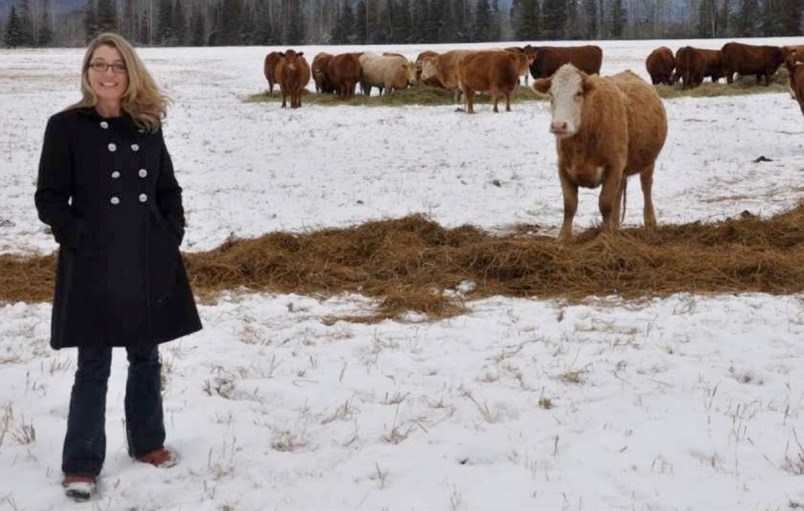B.C. Minister of Agriculture Lana Popham expects a new, independent committee to forward policy recommendations on farmland house sizes.
“This will be a hot issue,” Popham told the Richmond News.
“What should be encouraging for people in Richmond . . . is we have three committee members who worked for the (Agricultural Land Commission), so they understand specifically what’s going on with the challenge of house sizes,” said Popham.
The nine-member committee was announced Jan. 4 and is to “lead the revitalization of the Agricultural Land Reserve (ALR) and the Agricultural Land Commission (ALC) through an authentic and meaningful consultation process with stakeholders.”
Popham said she’s met with farmers and concerned residents of Richmond. Should the committee forward recommendations to legislate house sizes then she will “absolutely” comply. Such changes are expected by “late 2018 or early 2019,” per a news release.
Presently, the Ministry only stipulates municipal guidelines for a house size of 5,382 square-feet. Last year Richmond city council (with objections from Couns. Harold Steves and Carol Day) created a new bylaw to allow 10,764 square feet on lots greater than 0.5 acres. Prior to this bylaw dozens of houses over 15,000 square feet in size had been recently built, including many in excess of 20,000 square feet.
“I know council and staff are grappling with the situation and I expect some feedback,” said Popham.
Should the committee recommend provincial laws over municipalities, Popham said she would begin a legislative process, including going through the Union of B.C. Municipalities
“If you were to have a provincial law for home plates and house sizes you’d have to respect local government . . . so there are a few steps, but this (committee) will give us a road map,” explained Popham.
Steves said legislation should be brought in immediately, “but if they want to go through the process that’s fine too.”
However, Steves warned that a similar process took place under the B.C. Liberal government and recommendations were brushed aside.
Council resolved late last month to undertake more public consultation on ALR house sizes.
Steves said he hopes council reverses its course on its own and stipulates even greater restrictions, including “home plate” restrictions (the amount of land that can be built on (not necessarily the size of homes)).
While large-scale land owners/farmers have opposed the restrictions, the underlying worry from others is the escalating land values of farmland.
“When you build an enormous home on agricultural land, the one thing you’re guaranteeing is a new farmer will never purchase that land again. So you’re putting up a barrier forever,” said Popham.
Popham also said she expects the committee to look at property tax credits for farmland.
Presently a 2-10 acre farm requires just $2,500 of food sales to qualify for discounted farm class property taxes.
A 2015 Metro Vancouver report encouraged the government to increase these thresholds to foster greater food production. Popham said this could be done incrementally.
Another matter on Popham’s list for revitalizing Richmond farmland is addressing a gap in enforcement by the ALC on fill dumping, which the committee may explore.
Due to a construction boom, Popham said land owners are accepting toxic fill on their land.
So, “you’re making more money accepting fill than for farming,” she said.
She said there are only three enforcement officers for the entire province and the Richmond’s bylaws are only enforced on a complaint-driven basis.



